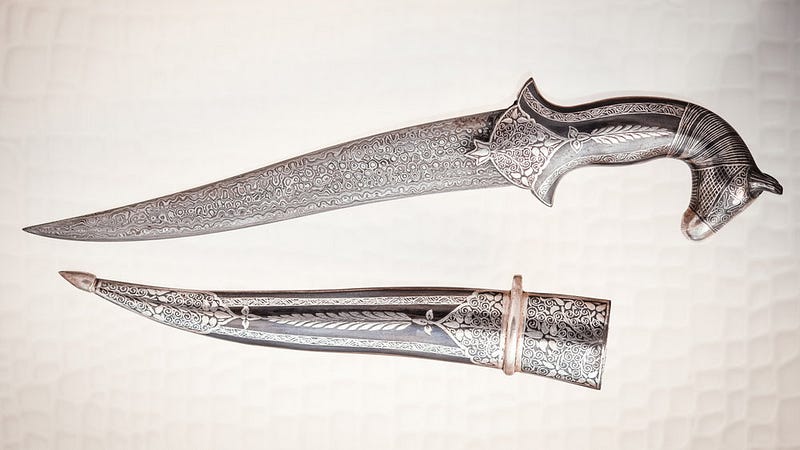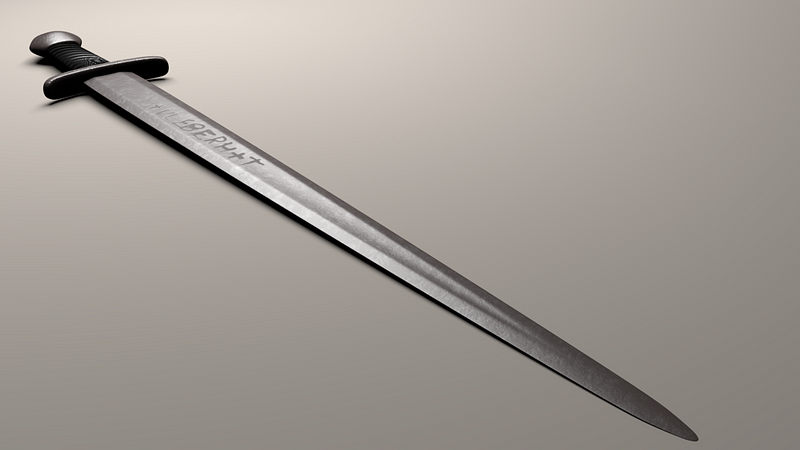Unraveling the Mysteries of Ancient Weapons: A Deep Dive
Written on
Chapter 1: The Role of Technology in Warfare
Throughout history, advancements in technology have significantly influenced warfare. The evolution of weaponry has often determined the outcome of battles, with each new innovation serving as a crucial turning point. For instance, iron weapons surpassed their bronze counterparts, and longbows could not compete with firearms. Similarly, the introduction of tanks revolutionized combat, rendering cavalry obsolete.
This overview highlights three ancient weapons that provided their wielders with a substantial tactical edge. Surprisingly, the methods used to create these exceptional weapons have been lost to time.
Section 1.1: The Indestructible Damascus Steel
Damascus steel swords earned a legendary reputation for their exceptional durability and flexibility. Despite its name, this steel did not originate in Damascus but rather in India. The term "Damascus steel" arose because Europeans primarily acquired these weapons from the Syrian city.
The true essence of Damascus steel lies in the crucible steel known as wootz steel, which was developed in Southern India around 500 BC and widely traded. This high-quality steel contained alloys such as tungsten, vanadium, and manganese.
From the 3rd to the 17th century, Damascus became a hub for blacksmiths who used small ingots of wootz steel to craft remarkable swords and daggers. Unfortunately, by the 18th century, the techniques for producing Damascus steel were forgotten. Several factors contributed to this loss, including the British suppression of mining and steel production in Southern India and a failure to pass down manufacturing secrets through generations.
Despite numerous attempts to recreate Damascus steel, none have fully succeeded.

Section 1.2: The Unquenchable Greek Fire
Greek fire, reminiscent of modern napalm, was utilized by the Byzantine Empire starting in 672 AD. This incendiary substance was notorious for its ability to burn uncontrollably, even on water. The only means of extinguishing it involved a mixture of vinegar-soaked hides, sand, and old urine.
Byzantine forces employed a specialized tube known as a siphon to project Greek fire at enemy vessels. The design often featured a lion's head, amplifying the weapon's psychological impact. Additionally, jars filled with Greek fire were catapulted towards foes.
This formidable weapon provided the Byzantine navy with a significant advantage, allowing them to secure victories despite being outnumbered. The successful use of Greek fire was instrumental during the sieges of Constantinople and in battles against the Rus and Bulgars.
The recipe for Greek fire remained a closely guarded state secret, divided among various individuals to minimize the risk of it falling into enemy hands. The last mentions of Greek fire appeared in 13th-century records, suggesting that its production ceased, possibly due to the loss of access to necessary resources.
The exact composition of Greek fire remains a subject of speculation, with theories proposing ingredients like naphtha, quicklime, sulfur, and resin.

Chapter 2: The Enigma of Ulfberht Swords
The Ulfberht swords, prized possessions among elite Viking warriors, were renowned for their sharpness and strength, providing a distinct advantage in combat. Archaeologists have uncovered only 170 of these swords, each bearing the inscription “+ VLFBERH + T,” indicating their Frankish origins (modern-day France and Western Germany).
Remarkably, these swords were crafted between 800 and 1,000 AD, a time when the technology for producing such high-quality steel was not developed until the 19th century. The modern method involves heating iron ore to 1,700 degrees Celsius (3,000 degrees Fahrenheit) and adding carbon.
The exact process used by the Franks remains a mystery, with historical accounts suggesting that the swordsmiths possessed almost magical abilities.

Conclusion: The Legacy of Ancient Weaponry
While today's weaponry is technologically advanced and often more destructive, it is astonishing to consider that our ancestors were capable of creating such powerful tools of war over a millennium ago. The lingering question remains: How did they achieve the remarkable craftsmanship of weapons like Greek fire and the Ulfberht swords?
Discover the most incredible ancient weapons and their impact on warfare.
Explore the fascinating history behind the most remarkable ancient weaponry.